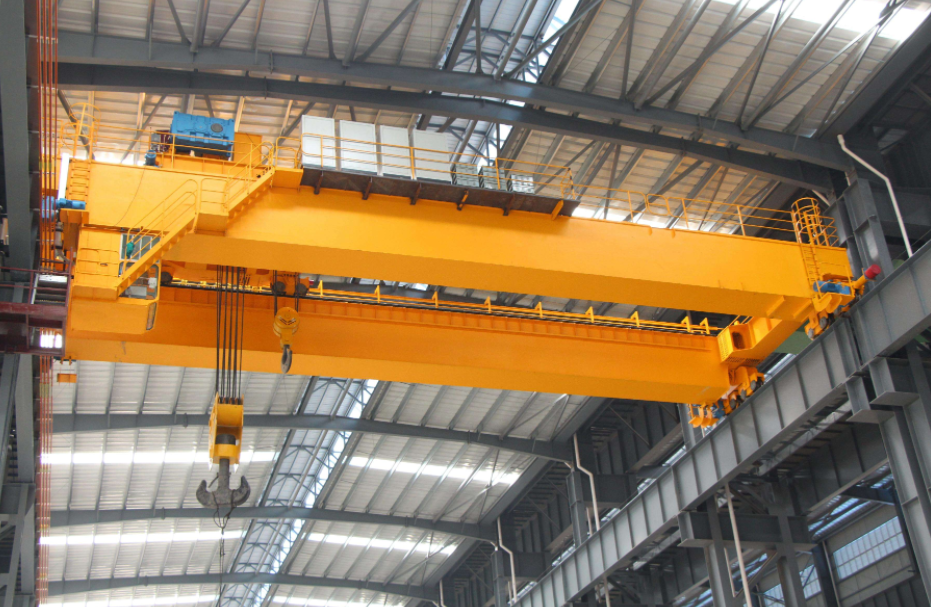Work Duty Classification for 20-Ton to 50-Ton Bridge Cranes
- blog@ellsenbridgecrane.com
- Jan 7
- 4 min read
Bridge cranes, also known as overhead cranes, are critical pieces of equipment in industries such as manufacturing, warehousing, construction, and logistics. For medium to heavy-duty lifting, bridge cranes with capacities ranging from 20 tons to 50 tons are commonly employed. Understanding their work duty classification is essential to selecting the right crane for your operational needs and ensuring longevity and safety.

What Is Work Duty Classification?
Work duty classification defines the operating conditions under which a 20 ton to 50 ton bridge crane is designed to perform. It considers factors such as the frequency of use, load spectrum, operating environment, and the duration of lifts. This classification helps determine the crane's durability and the appropriate maintenance schedule. The commonly used classification standards include:
ISO Standards (ISO 4301): Categorizes cranes by their duty class based on operating cycles and load spectrum.
FEM Standards (Fédération Européenne de la Manutention): Provides precise classifications for material handling equipment.
CMAA Standards (Crane Manufacturers Association of America): Often used in North America, these standards classify cranes into service classes.
Key Parameters in Work Duty Classification
Load Spectrum:
Refers to the range of loads the crane will handle. Cranes that handle heavy loads frequently are classified differently from those that primarily handle lighter loads.
Operating Cycles:
Each lifting operation—from picking up a load, transporting it, and placing it—is considered a cycle. The total number of cycles over the crane’s lifespan determines its duty classification.
Working Hours:
The daily and total operating hours influence the classification, with more intensive usage requiring higher-duty classifications.
Environmental Conditions:
Cranes operating in extreme conditions, such as high temperatures, corrosive environments, or outdoor settings, require higher duty classifications.

20 ton bridge crane
CMAA Crane Service Classifications
The CMAA standard divides cranes into six service classes, ranging from Class A to Class F. Below is an overview of these classifications as they apply to 20 ton bridge crane to 50 ton bridge crane:
Class A (Standby or Infrequent Service):
Used for infrequent and light-duty applications, such as in powerhouses or public utilities.
Example: A 20-ton crane used occasionally for maintenance tasks.
Class B (Light Service):
Suitable for light-duty operations with low frequency.
Example: A 25-ton crane in a warehouse handling loads a few times a day.
Class C (Moderate Service):
Designed for cranes used moderately, such as in general manufacturing and assembly operations.
Example: A 30-ton crane in a production line that lifts loads intermittently throughout the day.
Class D (Heavy Service):
Built for heavy-duty operations with frequent usage.
Example: A 40-ton crane used in a steel mill or for handling heavy components in construction.
Class E (Severe Service):
Intended for continuous or near-continuous operation under severe conditions.
Example: A 50-ton crane in a foundry where molten metal is handled regularly.
Class F (Continuous Severe Service):
Reserved for extremely demanding applications where the crane operates continuously at near-maximum capacity.
Example: A 50-ton crane in a shipyard lifting and transporting ship components.
ISO Duty Classifications
ISO 4301 classifies cranes into eight duty classes based on load spectrum and utilization level:
Light Duty (U1 to U2): For occasional or rare use with low loads.
Medium Duty (U3 to U4): For regular but not continuous use with moderate loads.
Heavy Duty (U5 to U6): For frequent use with high loads.
Very Heavy Duty (U7 to U8): For continuous use under maximum loads.
For example, a 20-ton crane in a manufacturing plant handling moderate loads might fall under U3 or U4, while a 50-ton crane in a steel mill could be classified as U6 or U7.
Factors to Consider When Selecting the Right Work Duty Class
Frequency of Use:
A crane operating continuously in a production facility will need a higher-duty classification compared to one used occasionally.
Load Characteristics:
Analyze the load spectrum—whether the crane will handle light, moderate, or heavy loads—to ensure proper classification.
Environmental Conditions:
Outdoor cranes exposed to wind, rain, or corrosive environments may require additional features and higher classifications.
Future Expansion:
Consider future operational needs to avoid underestimating the duty class, which could lead to costly upgrades or replacements.
Benefits of Proper Work Duty Classification
Enhanced Performance:
Choosing the correct classification ensures the crane operates efficiently and reliably under its intended workload.
Increased Longevity:
Cranes designed for their specific duty class experience less wear and tear, extending their service life.
Reduced Maintenance Costs:
Proper classification reduces the likelihood of breakdowns and minimizes maintenance requirements.
Improved Safety:
Matching the crane to its duty class prevents overloading and operational failures, ensuring worker safety.
Conclusion
Work duty classification is a crucial aspect of selecting and operating a 20-ton to 50-ton bridge crane. By understanding the various classification standards, such as CMAA and ISO, and assessing parameters like load spectrum, operating cycles, and environmental conditions, you can ensure that the crane meets your operational demands effectively. Proper classification not only enhances performance but also extends the equipment’s lifespan, reduces costs, and improves safety—making it an indispensable step in crane selection and operation.
When choosing a bridge crane, consult with industry experts and manufacturers to determine the best-fit classification for your specific needs. This ensures optimal performance and long-term satisfaction with your investment.








Comments